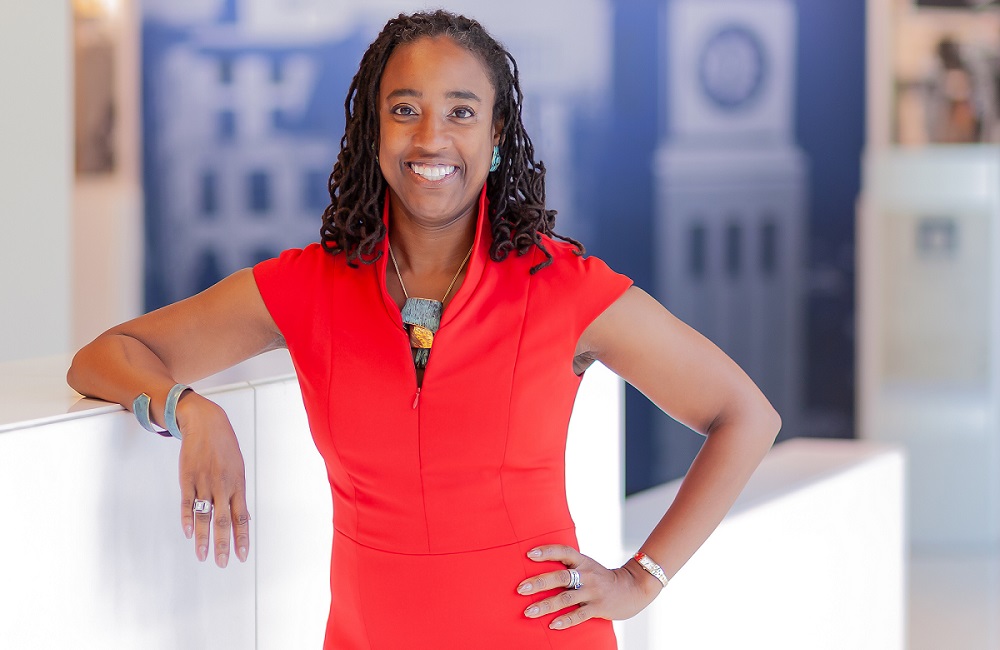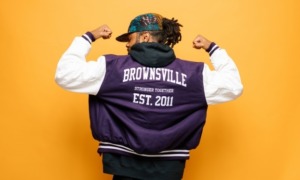Kristin Henning, a professor and director of the Juvenile Justice Clinic and Initiative at Georgetown Law, will never forget the moment over 25 years ago when she saw a line of Black and Hispanic children shackled together at their arms and their legs in a courthouse in Durham County, North Carolina.
Henning, who was then a freshman in college and working as an apprentice in the prosecutor’s office assigned to the juvenile unit, immediately thought of Alex Haley’s “Roots,” the popular 1970s television miniseries and novel about slavery in the U.S.
“I was just stunned, mostly by the fact that children — period — were being shackled in contemporary America. It had never occurred to me that this was happening in our society,” Henning said.
After regaining her composure, she walked straight to the prosecutor and said “I really want to be over there,” pointing to the defense counsel’s table.
In the decades that followed, Henning pursued a career to understand why youth of color are locked up at higher rates compared to white children. Her conclusion: Society criminalizes normal adolescent behaviors among children of color.
Her 2021 book, “The Rage of Innocence: How America Criminalizes Black Youth” examines the impacts of criminalization on children. She is a 2023 recipient of the Embracing the Legacy Award by the RFK Community Alliance at Boston’s JFK Presidential Library and Museum, which honors those who make positive impacts on the lives of people whose challenges and needs often go unseen.
The conversation
Your book is about the criminalization of Black adolescence. Can you describe what that means and how it contributes to a disproportionate number of Black kids in the juvenile and criminal justice system?
When I talk about the criminalization of Black and brown children, I often ask people to think about what kinds of foolishness and shenanigans they got involved in when they were kids, all the ways they were allowed to test the limits, push boundaries, talk back to adults, take risks, experiment with sex, drugs, alcohol, all of those things, as a part of normal adolescence. Most children don’t get locked up for those behaviors. For the majority of white children and children from wealthy homes, they get to do all of those things and they come out just fine.
It’s scientifically demonstrated that children engage in impulsive, risky behaviors because they don’t think ahead to the long-term consequences and are heavily influenced by their peers. Those are the key features of adolescence, across the board. And we grow out of those naturally, without having to have police intervention, court intervention or incarceration.
But for Black and brown children, our society is far more likely to default immediately to those law enforcement types of interventions when a Black child engages in some of those normal, risky behaviors, or even non-risky, normal behaviors.
Can you provide some examples of non-risky behaviors?
We criminalize really every aspect of Black and brown adolescence. Think about the clothes that children wear, the music that they listen to, the way they style their hair. That absolutely non-criminal behavior becomes criminalized.
Music such as heavy metal, rock music and pop music — all of these genres of music have the same attention to misogynistic themes, glorification of sex, drugs, alcohol, violence and profanity, all of which is pretty much without consequence. But when we talk about rap music and hip hop music, we treat the children who listen to it as if they are the most dangerous children on the planet.
In your book, you lay out the psychological damage this kind of stuff causes to young kids who are still developing. Can you discuss these impacts further?
The research shows that children who live in heavily surveilled neighborhoods or who are the target of significant stops and frisks report high rates of fear, anxiety, depression, hopelessness; they become hyper-vigilant — always on guard — and don’t trust police officers. Not trusting police officers often carries over to other adult authority figures like teachers or counselors who might be an ally for the child.
The research also shows quite powerfully that young people can experience trauma not just by being the direct target of some police action, but also by witnessing and observing police contact among friends of friends. They can even suffer vicarious trauma from watching police encounters on the internet or television.
This trauma can lead to post-traumatic stress disorder or other types of depressive symptoms, like panic attacks or just being sort of numb.
How does trauma affect how youth think about their future?
All these forms of contact with police action can have a significant impact on adolescent identity development. It can impact the ways in which children see themselves, how they think about who they are, who they can become and how they fit into the rest of society.
It also has a significant impact on their perceptions of law and law enforcement. Early negative encounters with the police either actually or vicariously can lead young people to question the legitimacy and fairness of law enforcement and whether or not it’s even worth it to participate in mainstream society.
What do you think needs to be done? How do we reduce these impacts on children?
We need to radically reduce the footprint of police in the lives of all children, but especially Black and brown children who have been disproportionately overrepresented in the juvenile and criminal legal system. That means rethinking our complete over-reliance in this country on traditional forms of public safety and traditional reliance on law enforcement — blue-uniformed officers, surveillance equipment and police in schools.
The second strategy is to invest in community-based alternatives and a public health approach to safety that includes a framework that is racially equitable, trauma-informed, restorative and attentive to cultivating meaningful relationships between children and adults.
What does the public health framework look like in the community?
What that looks like is a continuum of mental health services for young people that includes community-based services like restorative justice, peer intervention, vocational training for young people, mediators, violence interrupters, credible messengers, positive peer interventions, as well as smaller class sizes and social-emotional learning in the school curriculum. All those things have been shown to reduce crime and improve safety in the community.
Curious as to what’s next for you; are you working on another book?
Yes, I am. I was recently approached by a wonderful person named John Bunn, who was wrongfully convicted of murder at 14 and spent 16 years in prison in New York. Eleven years after he was released from prison, he was exonerated. Now he wants to write his biography. I agreed to help him write the book. The project will be more than just a biography, it will also talk about the pain and the trauma associated with prosecuting children as adults. That’s what I am working on now. Hopefully, it will be powerful.
The Details
Residence: Takoma Park, Maryland
Title: Director of the Juvenile Justice Clinic and Initiative and Blume Professor of Law at Georgetown University Law Center
Hobbies: Running, exercising and traveling internationally. Recently traveled to Costa Rica this summer and Kenya in February.
Recent reads: “The Sun Does Shine: How I Found Life and Freedom on Death Row” by Anthony Ray Hinton and Lara Love Hardin
First paid job: Worked in retail at a clothing store in Rocky Mount, North Carolina
Education: Bachelor’s degree from Duke University, Juris Doctor from Yale Law School and Master of Laws from Georgetown Law
***
Brian Rinker is a Pennsylvania-based journalist who covers public health, child welfare, digital health, startups and venture capital.



























